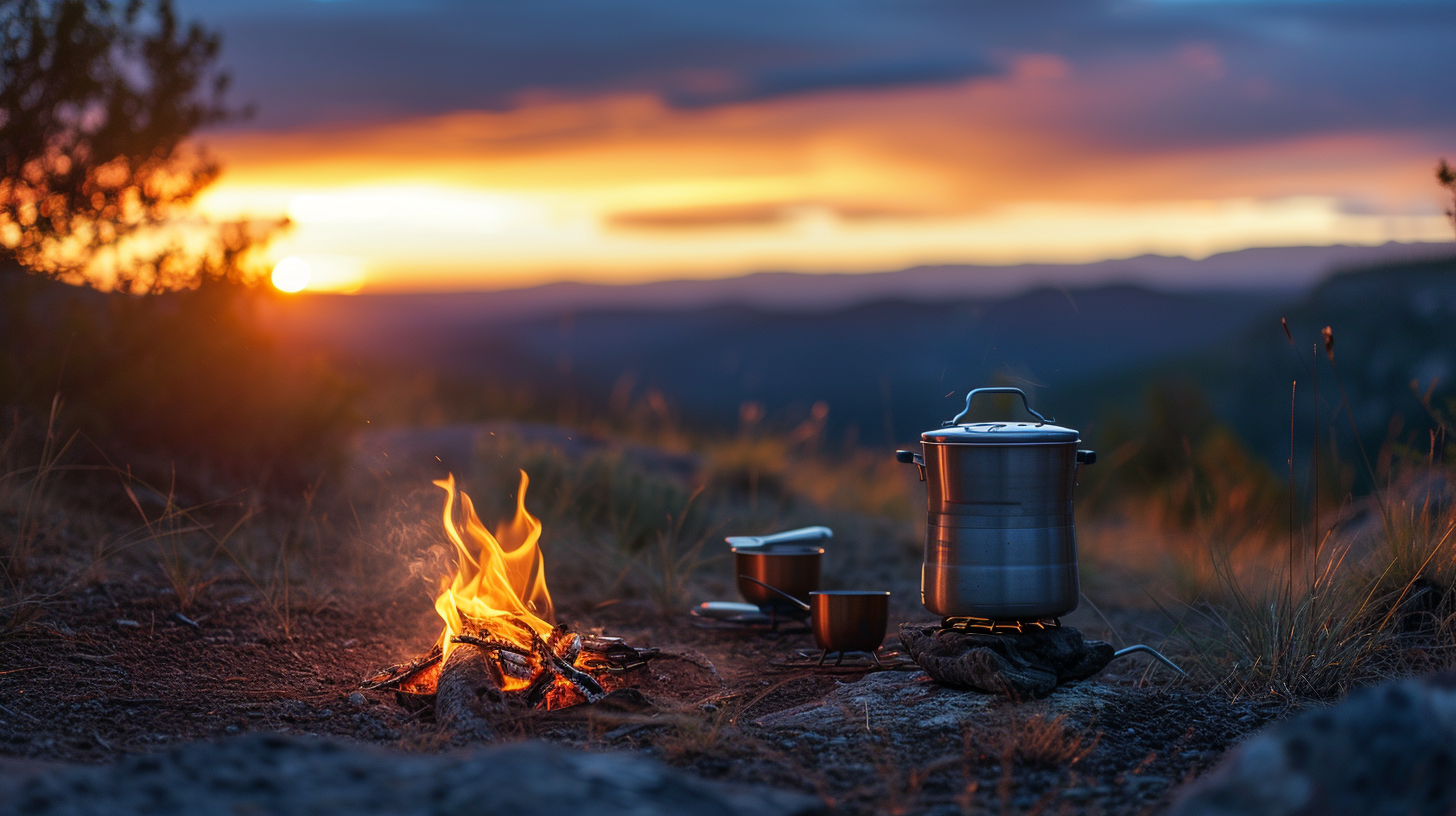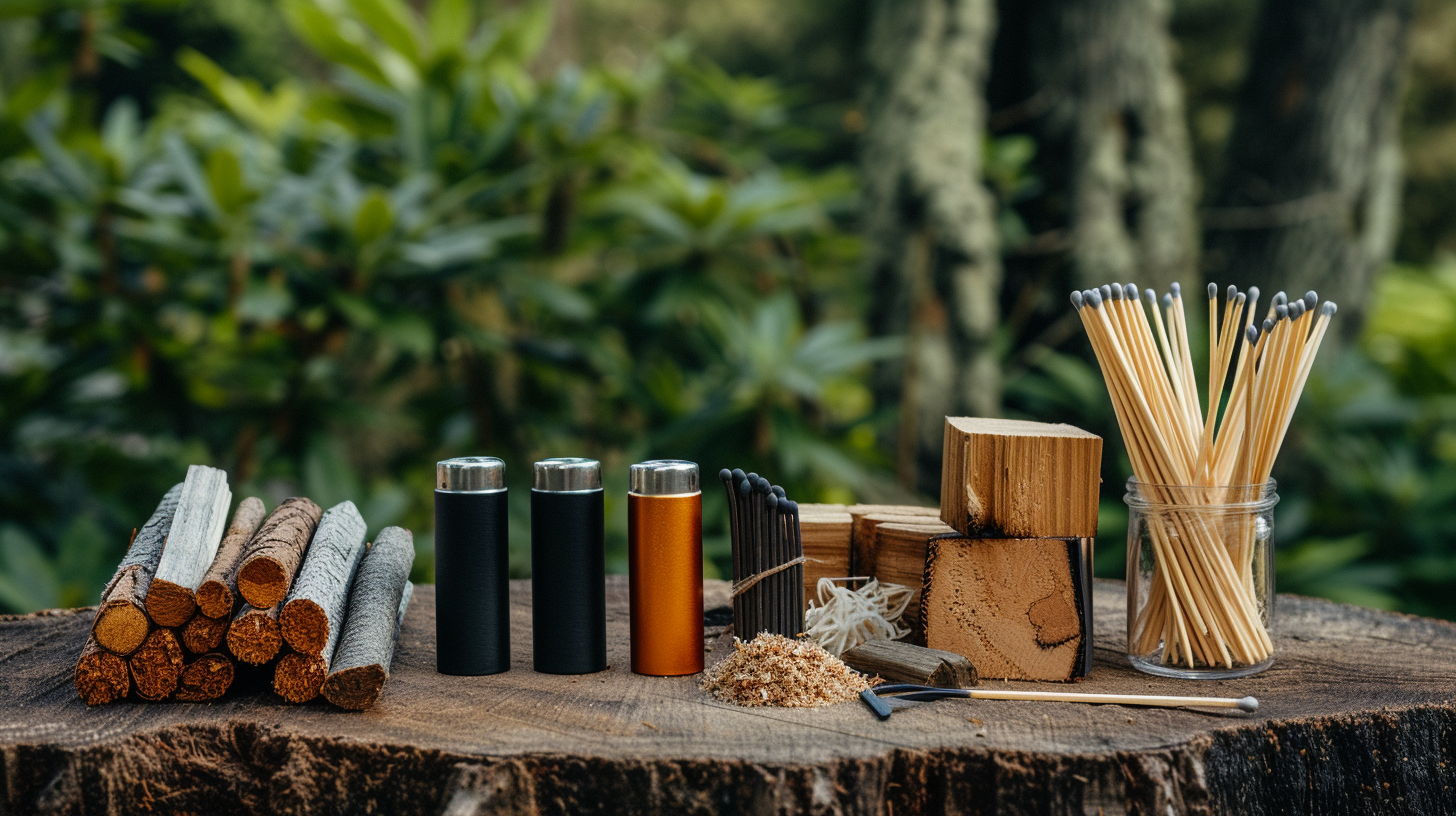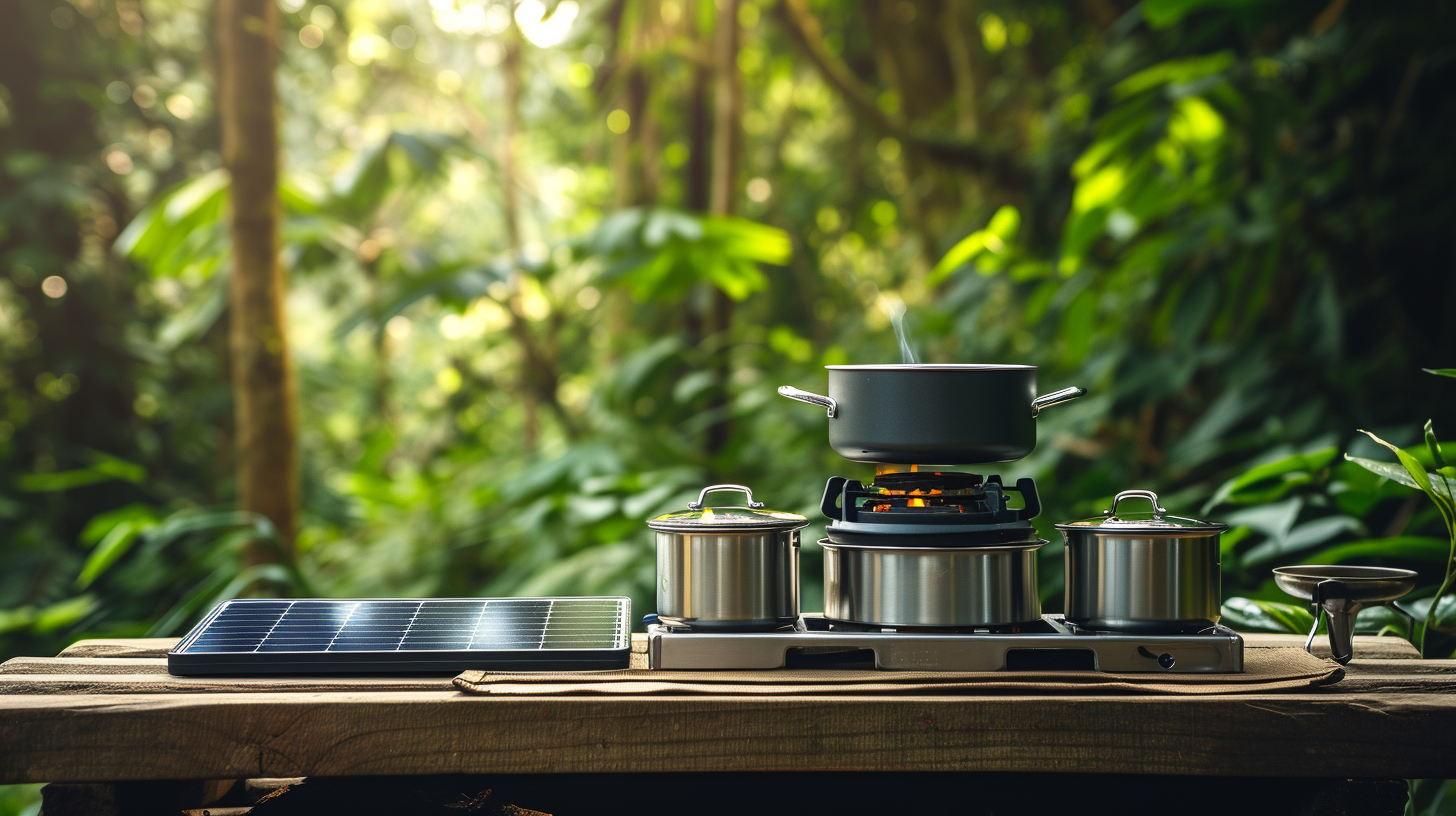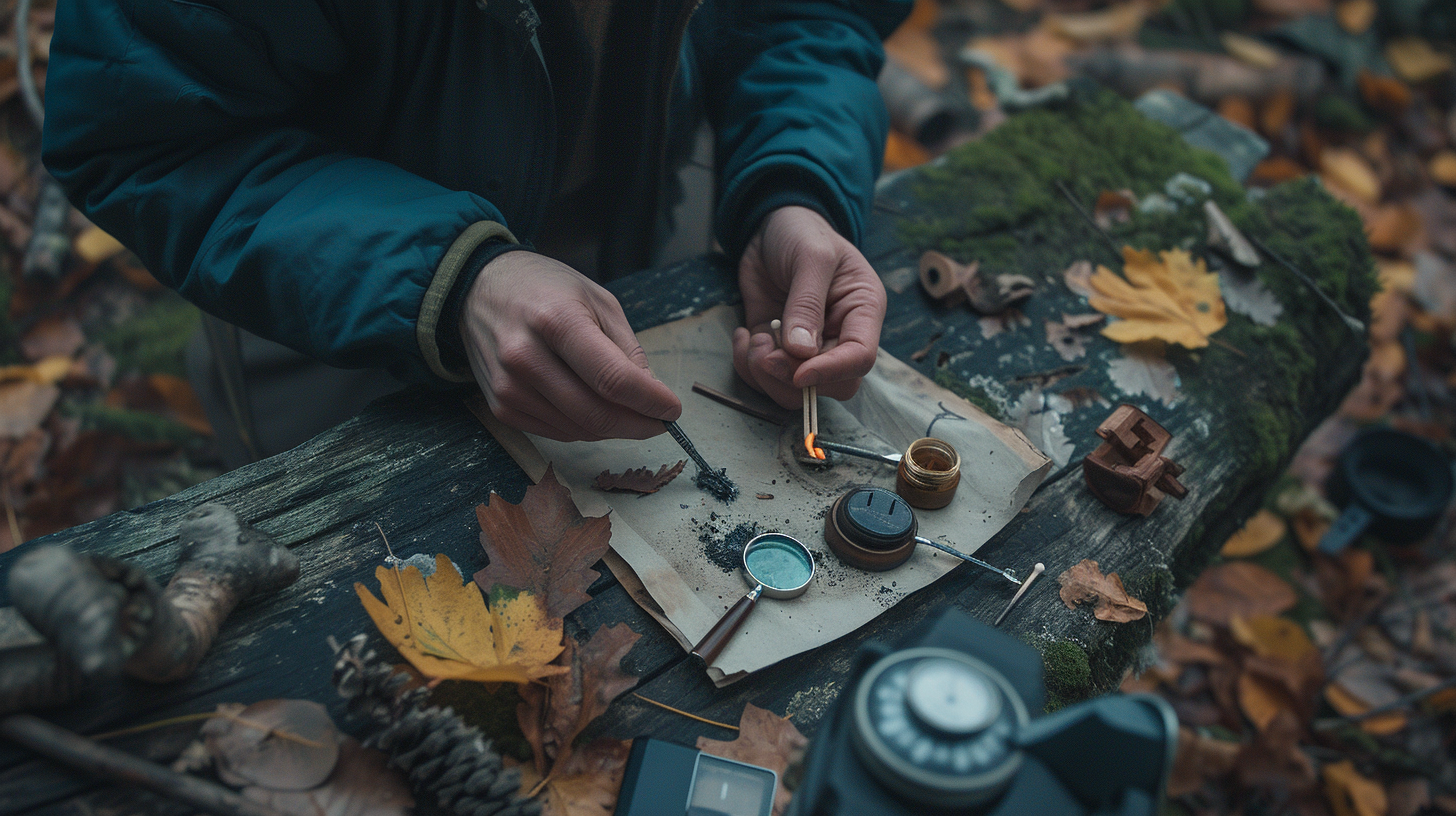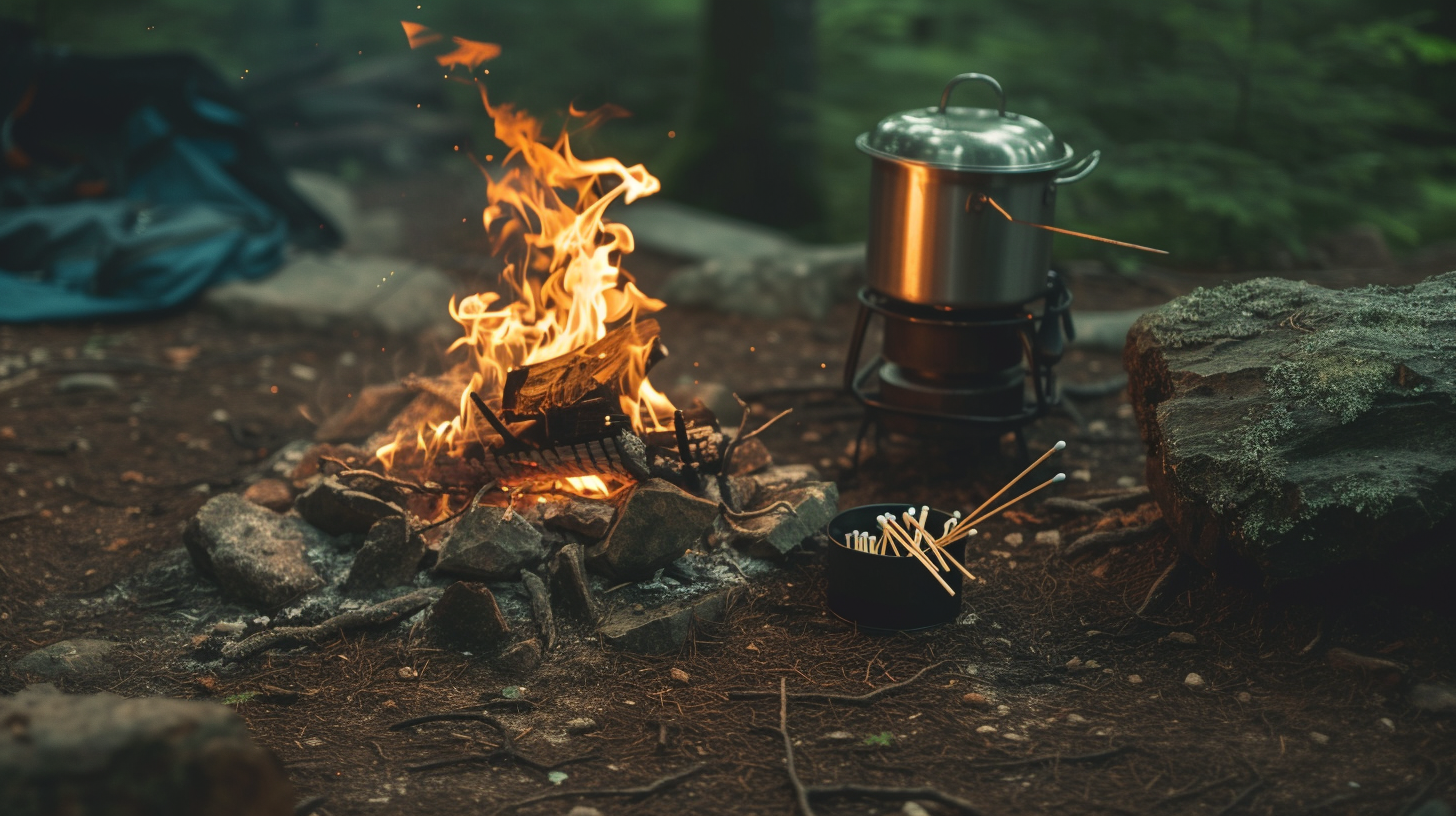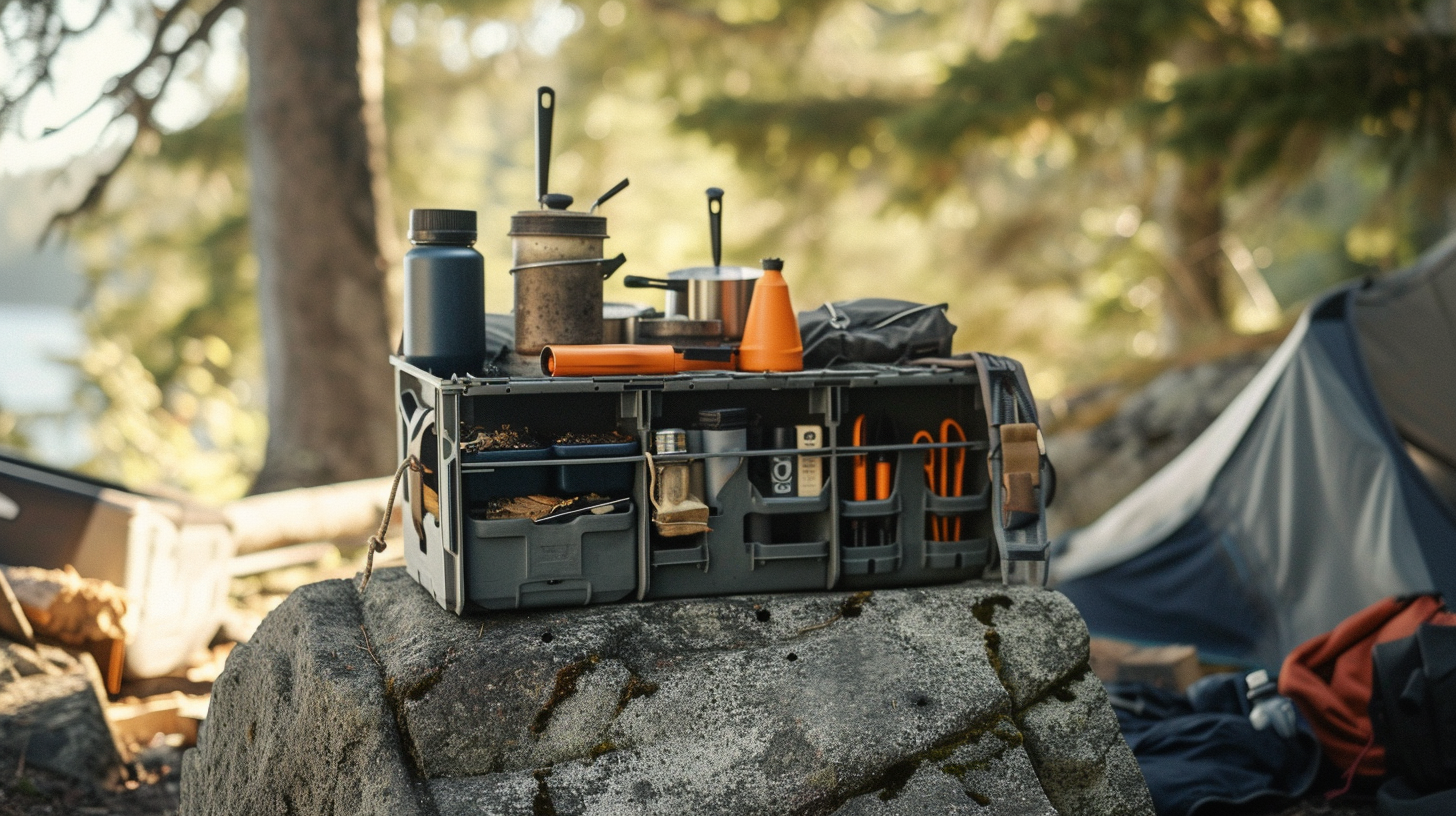Imagine you’re stranded in the wilderness after a catastrophic event, with nightfall approaching and the temperature dropping rapidly. In this scenario, your ability to start a fire and cook could mean the difference between comfort and hypothermia, strength and weakness.
You’ll find that fire starters and cooking equipment aren’t just accessories in your SHTF kit; they’re lifelines. These tools not only provide warmth and the means to cook nourishment but also purify water and signal for help.
Yet, the variety and functionality of these tools can be overwhelming, and not all gear is created equal. As we explore the indispensable role of fire starters and cooking equipment in survival situations, you’ll discover how to select the most reliable and effective tools that could one day save your life, ensuring you’re prepared for the unexpected.
Key Takeaways
- Fire starters are essential in a SHTF kit, providing warmth and cooking capabilities.
- Choosing reliable and effective fire starters is crucial for survival.
- Different types of fire starters, such as friction fire starters, flint and steel, fire piston, magnifying lens, and matches, can be used to start and maintain a fire.
- Familiarizing yourself with different cooking methods and alternative cooking equipment like solar cookers or portable stoves is important in emergency situations.
Understanding Fire Starters
In an emergency, having a reliable fire starter, like Insta-Fire, in your kit can mean the difference between staying warm and cooking your meals or facing the cold and hunger. You need to know how crucial fire starters are for survival.
Whether you’re dealing with extreme weather conditions or simply need to boil water, starting a fire quickly and efficiently is key. With a variety of methods available, from traditional friction-based techniques to innovative products like Insta-Fire, you have options at your fingertips.
But here’s the thing, not all fire starters are created equal. Insta-Fire stands out for its ease of use, making it a valuable addition to any 72-hour kit or emergency storage. Imagine trying to start a fire under pressure; you’d want something that ignites fast and burns long enough to get your fire going strong. This is where the right fire starter becomes your best ally.
Types of Cooking Equipment
You’ve got your fire starters sorted, but what about cooking your meals when SHTF? Let’s take a closer look at your options.
Portable stoves:
- Pros: Portable stoves are convenient and easy to use. They provide a stable cooking surface and can be fueled by various sources such as propane, butane, or wood pellets.
- Cons: They require fuel to operate, which may become scarce during a crisis. Some models can be bulky and heavy to carry.
Solar cookers:
- Pros: Solar cookers use renewable energy from the sun, making them environmentally friendly. They are lightweight and portable, making them a good option for outdoor cooking.
- Cons: Solar cookers rely on direct sunlight, so they may not be suitable in areas with limited sunshine or during cloudy days. They can also take longer to cook food compared to other methods.
Importance of material in cooking gear:
- The material of your cooking gear can impact its durability and performance. Stainless steel is a popular choice as it is durable, easy to clean, and resistant to rust. Cast iron is another option known for its excellent heat retention, but it can be heavy to carry.
Each choice has its own set of advantages and challenges, so it’s crucial to weigh them carefully.
Portable Stoves: Pros & Cons
When considering the addition of portable stoves to your SHTF kit, it’s crucial to weigh their pros and cons carefully.
Portable stoves are invaluable for cooking food and boiling water quickly, making them essential for survival situations. They’re efficient, allowing you to cook food or boil water without the extensive setup time and materials required for a traditional fire.
However, portable stoves have their drawbacks. They rely on fuel, which you’ll need to carry with you, adding weight to your gear. Additionally, if the fuel runs out or the stove malfunctions, you could be left without a way to heat your meals or purify water.
Balancing these factors is key to deciding if a portable stove fits your needs.
Solar Cookers: Efficiency Examined
Why not consider solar cookers as a sustainable alternative in your SHTF kit for their efficiency in cooking without traditional fuels? These ingenious cooking equipment options offer a reliable means for survival and emergency preparedness, eliminating the need for conventional fire starters.
With varieties like box cookers, panel cookers, and parabolic cookers, each serves a specific purpose. Box cookers excel in slow cooking and baking, retaining heat effectively. Panel cookers, being lightweight and portable, are perfect for boiling water and simple meal heating. For those needing to cook larger quantities swiftly, parabolic cookers are the powerhouse choice.
Embracing solar cookers not only enhances your emergency kit’s versatility but also supports an eco-friendly approach to survival cooking.
Cooking Gear: Material Matters
Selecting the right material for your cooking gear in a SHTF kit is critical, as it directly affects the equipment’s weight, durability, and how well it performs under different conditions.
Material matters when you’re choosing cooking equipment to complement your fire starters, ensuring you’re prepared for any situation. Whether it’s for boiling water, cooking meals, or just heating food, the durability and functionality of your gear are paramount.
Opt for lightweight, durable materials that can withstand high temperatures and rough handling. Remember, in a SHTF scenario, your cooking equipment, alongside reliable fire starters, becomes your lifeline. Make wise choices to ensure your kit is equipped to handle whatever comes your way, maintaining functionality without adding unnecessary weight.
Importance in Emergency Situations
In emergency situations, having a reliable fire starter can mean the difference between survival and distress, as it enables you to cook, stay warm, and signal for help. Your SHTF kit isn’t complete without diverse fire starters and cooking equipment. These tools are not just accessories; they’re lifelines in the wilderness or during unplanned events. Whether it’s Insta-Fire, a flint and steel, or even something as simple as petroleum jelly and cotton balls, each has its place in ensuring you’re prepared.
| Fire Starter Type | Advantage |
|---|---|
| Flint and Steel | Durable and reliable in wet conditions |
| Fire Piston | Can be used multiple times |
| Magnifying Lens | Unlimited use on sunny days |
| Matches (Waterproof) | Easy to use |
| Petroleum Jelly and Cotton Balls | Inexpensive and lightweight |
Having multiple types of fire starters in your SHTF kit ensures you’re ready for any scenario. Fire is critical for survival – it cooks your food, keeps you warm, provides light, and offers protection from wildlife. In addition to fire starters, including versatile cooking equipment in your kit ensures you can prepare any food you might have, further enhancing your chances in emergency situations. Remember, it’s not just about having the tools but knowing how to use them effectively.
Fire Starting Techniques
Selecting the right fire starters is crucial for survival. You’ll need to know how to build a basic fire effectively and keep it going, even when conditions are tough.
You’ll explore which tools best suit your needs, the foundational methods for igniting a flame, and strategies to maintain that fire in adverse situations. Understanding these techniques ensures you’re prepared, no matter what the environment throws at you.
Choosing Suitable Fire Starters
When considering fire starters for your survival kit, it’s crucial to understand the advantages and limitations of each type based on your environment and skill level. Here’s a quick guide:
Friction Fire Starters:
- Bow drill, hand drill, fire plow, fire saw
- Effective but require practice
- Challenging in wet environments
Flint and Steel:
- Lightweight, portable
- Works in all moisture conditions
- Small sparks can be hard to ignite
Fire Piston:
- Uses first law of thermodynamics
- Lightweight, portable
- Compromised seal ruins the device
Magnifying Lens:
- Works with sunlight
- Lightweight, portable
- Needs bright sunlight
Matches:
- Lightweight, portable
- Single-use
- Easily ruined by moisture
Choose wisely for your emergency kit and DIY survival strategies, ensuring you’re prepared for any conditions your survival kits might face.
Basic Fire Building Methods
Once you’ve chosen your fire starter, mastering the art of building a fire is your next crucial step. Techniques like the bowdrill or hand drill utilize local resources but demand significant time and energy, especially in wet conditions.
If you’re using a rod fire starter, like flint and steel, make sure to prepare a small, easily ignitable tinder bundle since the sparks are small and require precision to catch fire.
For those looking for simplicity, matches are straightforward—just make sure they’re kept dry. Alternatively, a magnifying lens requires minimal technique but is dependent on bright sunlight.
Whatever method you opt for, practice is key to ensure you can reliably make a fire under any circumstances.
Maintaining Fire Under Adversity
After mastering the initial steps of building a fire, you’ll need to learn how to maintain it in challenging conditions, a crucial skill for any survival situation. Maintaining fire under adversity means keeping your fire going regardless of the environment.
Here’s how different fire starters fare:
Friction Fire Starters:
- Pros: Utilizes local resources.
- Cons: Challenging in wet conditions.
Flint and Steel:
- Pros: Works in all moisture conditions.
- Cons: Requires technique for small sparks.
Fire Piston:
- Pros: Few moving parts, long-lasting.
- Cons: Compromised seal ruins the device.
Magnifying Lens:
- Pros: No moving parts, lightweight.
- Cons: Seasonal, needs bright sunlight.
Matches:
- Pros: Minimal technique required.
- Cons: Single-use, ruined by moisture.
For a rod fire starter, combining it with a long-lasting technique ensures you’re prepared for maintaining fire under any adversity.
Cooking Methods and Safety
Ensuring your safety while employing various cooking methods in a survival situation is paramount. When you’re relying on fire starters and cooking equipment from your SHTF kit, it’s crucial to prioritize safety to prevent accidents and injuries. Different cooking methods, like boiling, roasting, and steaming, can be lifesavers for preparing food during emergencies. However, knowing how to handle and store your cooking gear and fuel sources safely is key to avoiding fires and ensuring your equipment lasts.
You’ll also want to familiarize yourself with alternative cooking methods, such as using solar cookers or portable stoves. These options can be invaluable in situations where traditional fuel sources are scarce or when you need to adapt to different environmental conditions. Remember, it’s not just about having the tools but knowing how to use them effectively.
Before an emergency strikes, take the time to practice and test your cooking methods and equipment. This prep work ensures you’re not just ready but efficient and safe when it’s time to turn that emergency fire into a means for cooking. Safety in food preparation can make all the difference in a survival scenario.
Maintenance and Storage Tips
To keep your survival gear in top condition, it’s essential to regularly maintain and properly store your fire starters and cooking equipment. By following these maintenance and storage tips, you can ensure your equipment is ready to use and reliable in case of emergency.
Maintenance Tips:
- Inspect cooking equipment for any signs of damage or wear and tear.
- Replace any expired or damaged items ahead of time.
- Regularly check and replenish the fire starters in your kit.
- Ensure they’re easy to use when you need them most.
Storage Tips:
- Keep fire starters in a dry, sealed container to prevent moisture damage.
- Store matches in a waterproof container for extra protection.
- Place your cooking equipment in a location that’s easily accessible.
- Organize your kit so that everything is easy to find in a hurry.
Conclusion
In your SHTF kit, fire starters and cooking equipment are lifesavers. They’re not just for warmth or a hot meal; they’re critical for survival. Whether you’re boiling water to stay hydrated or signaling for help, mastering fire starting techniques and knowing how to use your cooking gear safely is essential.
Always prioritize their maintenance and storage to ensure they’re ready when you need them most. Remember, being prepared isn’t just about having the right tools; it’s about knowing how to use them effectively.

